Sorted by date Results 1 - 25 of 384

As every sensible person knows, there is pretty much no such thing as being “cruel to be kind.” Sometimes it does work the other way around, though. Now and then you run across a story in which someone did something that was intended as a kindness, but turned out to be anything but. Such a case happened in the office of Oregon Governor Oswald West, sometime in 1912. It had to do with a little shooting scrape that Z.H. Stroud, an acquaintance of West’s, had gotten into in the little front...

Virgil settled down in Colton with Allie and tried to put down roots. He worked security for Wells Fargo & Co. — using a top-break revolver that he could reload one-handed — and opened a detective agency. Later he served as town constable and became famous for his even temper and his ability to de-escalate potentially deadly situations. His favorite less-than-lethal law enforcement technique, when force had to be used, was “buffaloing” — that is, pistol-whipping — unruly suspects. After the “ven...
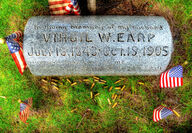
Portland’s River View Cemetery is the state’s oldest nonprofit cemetery, founded in 1882 by three of Portland’s most prominent citizens: Henry Corbett, Henry Failing, and William S. Ladd. All three of them are buried there — Ladd’s grave in particular was the target of a bizarre raid by a gang of grave robbers 15 years later, but that’s a story for another time. In addition to the three of them, dozens of other Portland notables have their final resting place in this lovely pastoral necropolis....
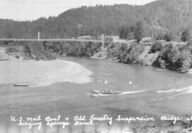
Robert Franz came to the Illinois River Valley in 1921 for his health. Suffering from a degenerative lung disease — probably tuberculosis — he had been advised that moving into the Oregon wilderness, with its clean air and healthy climate, was his best shot at staying alive. That didn’t turn out to be true. To be fair, that wasn’t the climate’s fault — but I’m getting ahead of myself. Robert and his wife, Annanette Bruun Fantz, bought a big 72-acre piece of land on a natural terrace overl...
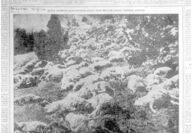
Signs and threats like the “COMITEE” warnings in the Klickitat Valley showed that this threat was being taken very seriously. Fortunately, though, the worst-case scenario was very rare. There were a few sheepherders who insisted on their right to plunder the public domain regardless of how the neighbors felt about it; but on the Western frontier, disagreements like this had a tendency to get worked out with fists and sometimes pistols. Overall, everyone grumbled, but they all managed to coe...

In the early 1880s, visitors in the Klickitat Valley, just across the Columbia River from The Dalles and Biggs Junction, recalled seeing some very singular signs posted regularly along the right-of-way: NOTISE: All land in woods past Draper Springs is for Settlers cattle. No sheep is allowed. Sheep men take notise. — Comitee By “Comitee,” it was clearly understood, the writer meant some sort of vigilance committee, a coalition of cattle ranchers and sodbusters who had come together to fight...
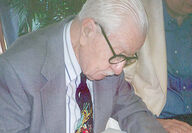
On September 14, 1964, the steamship Al Kuwait was moored at the dock in Kuwait City when something terrible happened: The ship capsized and settled to the harbor floor. This was bad enough news for the town by itself. But the real problem was, that Al Kuwait was a livestock transport freighter. It was full of sheep. Five thousand of them. These poor animals were, of course, drowned when the hull flooded. But then the carcasses started to decompose. This was an environmental disaster, because...

Sometime in April of 1960, a shy, retiring, hard-of-hearing comic-book artist named Carl Barks got a letter at his quiet suburban home. When he opened it, he found that it was a letter from a stranger named John Spicer. And to his astonishment, he found that it was — a fan letter. “Believe it or not, I have been planning this letter for about four or five years,” Spicer wrote. “I have been kept from doing so for the simple reason that I knew not your name or address. I tried several times, howev...
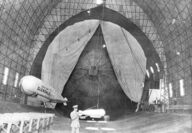
Ironically enough, it was on the first day of winter — the winter after the 1929 stock-market crash that kicked off the Great Depression — that Oregon inventor Thomas B. Slate’s dream of a business empire built on shiny silver steam-powered airships received its death blow. Slate had left his native state several years earlier and made a fortune by inventing and commercializing the production of “dry ice” — frozen carbon dioxide. Then he’d left, sold his company, and moved to Glendale, Cal...

One could think of late June and early July of 1968 in Cannon Beach as the Summer of the Dead Baby Birds. On June 28, at the height of the nesting season, a 23-year-old man from Portland had scrambled up the side of Haystack Rock, the iconic intertidal sometimes-island that towers nearly 200 feet over the beach and sea by Cannon Beach and gotten stuck at the top. It wasn’t common for people to climb the rock, but it wasn’t exactly unheard of either. The problem was, that it was a very dif...

Last Saturday people had a chance to add to their local knowledge storehouse thanks to a review of some of the background for a property they might often pass by. As Cliff Richardson explained two mills once occupied the site that is now the home to the McKenzie Community Track and Field complex and the Three Sisters Meadows parcel. Back before the 1960s, when Highway 126 was reconstructed to run through the site, it had extended to the river and was home to a sawmill started by the Armstrong...

Day before birthday, man survives 300-Foot plunge off Highway 20 SANTIAM PASS: A Salem man survived a morning crash last Thursday in the Santiam Pass area in which he lost control of his sport utility vehicle, crashed through a guardrail, and traveled approximately 300 feet down an embankment before coming to a stop. He was extricated from his vehicle and brought back up to the highway by fire and medical personnel before being transported for non-life-threatening injuries. According to Oregon S...

Reprinted from the June 16, 2011 edition of McKenzie River Reflections EUGENE: The Lane County Board of Commissioners on Wednesday was slated to approve applications submitted by Public Works Dept. for grant funding under the National Historic Covered Bridge Preservation Program (NHCBP) for the Belknap, Office, Unity, and Pengra covered bridges. The program would pay for approximately 90 percent of project costs, with the remainder coming from county coffers. If approved, work on the Belknap...

Reprinted from McKenzie River Reflections Volume 13, October 12, 2006 Continued From Last Week In June 1897 the Organic Administration Act of 1897 was passed, which authorized the Secretary of the Interior to “make such rules and regulations” as were necessary to ensure the objectives of such reservations. Acting on this authority, the General Land Office issued some tentative regulations on grazing, permitting pasturing on forest reserves provided that no damage was done to forest growth. How...
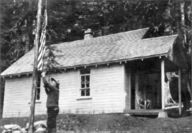
Reprinted from McKenzie River Reflections Volume 13, October 12, 2006 BEGINNINGS, 1891-1898 The movement for forestry and Federal forests in the periodb1876 - 1891 was a complex one. It involved a variety of agencies, ranging on the Federal level from the Division of Forestry to the U.S. Fish Commission, and included state activity. At least three western states, Colorado in 1876, California in 1885, and Oregon in 1889, asked that forest reserves be created within their boundaries. Motives for...

In the small hours of the morning of Aug. 16, 1906, a powerful explosion jolted residents awake near the little town of Willamette, which today is a neighborhood of West Linn. It came from the direction of the nearby Tualatin River. The cause was soon discovered. When the first rays of the morning sun fell on the Oregon Iron and Steel Co.’s diversion dam, located a little over three miles from the river’s mouth, a 20-foot-wide hole had been blasted in its center. The river water was still gus...

Continued From Last Week Big League Chew (1977) Baseball players, back in the day, were somewhat famous for chewing tobacco on the field. Fans would see them pull a pouch of Red Man or Beech-Nut out of their uniform pocket, dip out a big pinch, and stuff it in “between the cheek and gum.” Sometimes it would even make a visible bulge. Minor-league slugger Rob Nelson probably chewed the stuff too, although he played for the Portland Mavericks; in Portland, as in most of the Pacific Northwest, mois...

Continued From Last Week The Tater Tot (1953) As we turn our attention to what food historian Heather Arndt Anderson calls “Oregon’s prodigal spud,” we are straying into distinctly non-Christmassy territory. And yet, in the few dozen short years since brothers Golden and Neef Grigg invented it, the Tater Tot has become as much a part of American comfort food as the Velveeta-drenched macaroni noodle. It all got started just after the Second World War when Golden and Neef rented a flash...

Iconic food items invented in Oregon By Finn J.D. John At the time of this writing, the Christmas shopping season is just starting to spool up, and folks are getting ready for some serious holiday eating. Most likely, that festive feasting won’t include many of the things on this list. Although inventors from the Beaver State have had a big impact at the grocery store, most of what they’ve created would be a bit out of place at a Christmas dinner. The big exceptions are the products created by...

Lane County Historian VIII No. 2, June 1967 A special interest has been added to the finding of the Condra tree markings discovered in 1960 in the McKenzie River Valley Country, with the earth circling on February 20 by John Glenn, the first American astronaut. It is interesting to note that Glenn is a relative of the Condra who carved this record on the hemlock tree in 1867 - almost a century ago. Another occasion for this story is that the section of the tree bearing the scribing has been on...

Lane County Historian XXXVI, #1, Spring 1991 When I was a very, very young child my mother and father were operating a hotel in Blue River, mostly for the benefit of miners and people who worked at the Blue River mines. The hotel in 1909 kept my parents very busy, so at age four I spent a great deal of time with my grandparents, Samuel and Robenia Sparks, who lived in their old log homestead house about a half mile west of the community of Blue River. I think they enjoyed having me as much as I...

Continued From Last Week At one point, Oregon Trunk Railroad president John Stevens (Hill’s top lieutenant on the job) learned the Twohy Brothers had built a wagon road across a 230-acre parcel of private land to access the nearest water supply. Stevens promptly bought the land — actually, he just bought an option on it, but it came with some property rights, which gave him the right to fence it off and hang “No Trespassing” signs everywhere, and station armed guards. The Twohy Brothers complai...

Sometime in the late spring of 1909, at the Oregon Railway & Navigation Company’s ticket booth in Portland, a 19-year-old man named Jim Morrell laid down his last $2 for a ticket on the Bailey Gatzert, the famous Columbia River sternwheeler. Destination: The Dalles. Morrell was from Colorado originally; just now he was at loose ends, drifting through Portland looking for work. He thought he might find it in The Dalles. Someone had told him about a great railroad war playing out near The D...
From River Reflections May 30, 1983 Most of us have noticed fishing flies for sale somewhere here along the river. They are casually bought and sold in tackle shops, hardware stores, gas stations, restaurants, and taverns from Springfield to Sisters — thousands of them every year. Hundreds more are made and fished by individuals, who add to the pleasure and satisfaction of their sport fishing with flies of their own manufacture. Though the numbers increase yearly, the demand for professionally tied flies increases at an even greater annual r...
A wealth of memories clings around the name, “Thomson’s Lodge,” and in spite of the fact that the lodge has now passed out of the hands of the Thomson family who founded it in 1860, the name and the famous hospitality of the place will continue. One of the eldest resorts in the state to be run exclusively for sportsmen by one family, it was sold during the past week to Mr. and Mrs. Alvin P. Gannon of Portland. Dayton and Milo Thomson were the owners of the property, which was divided for the purpose of the sale. Ten acres of land, the lodge...